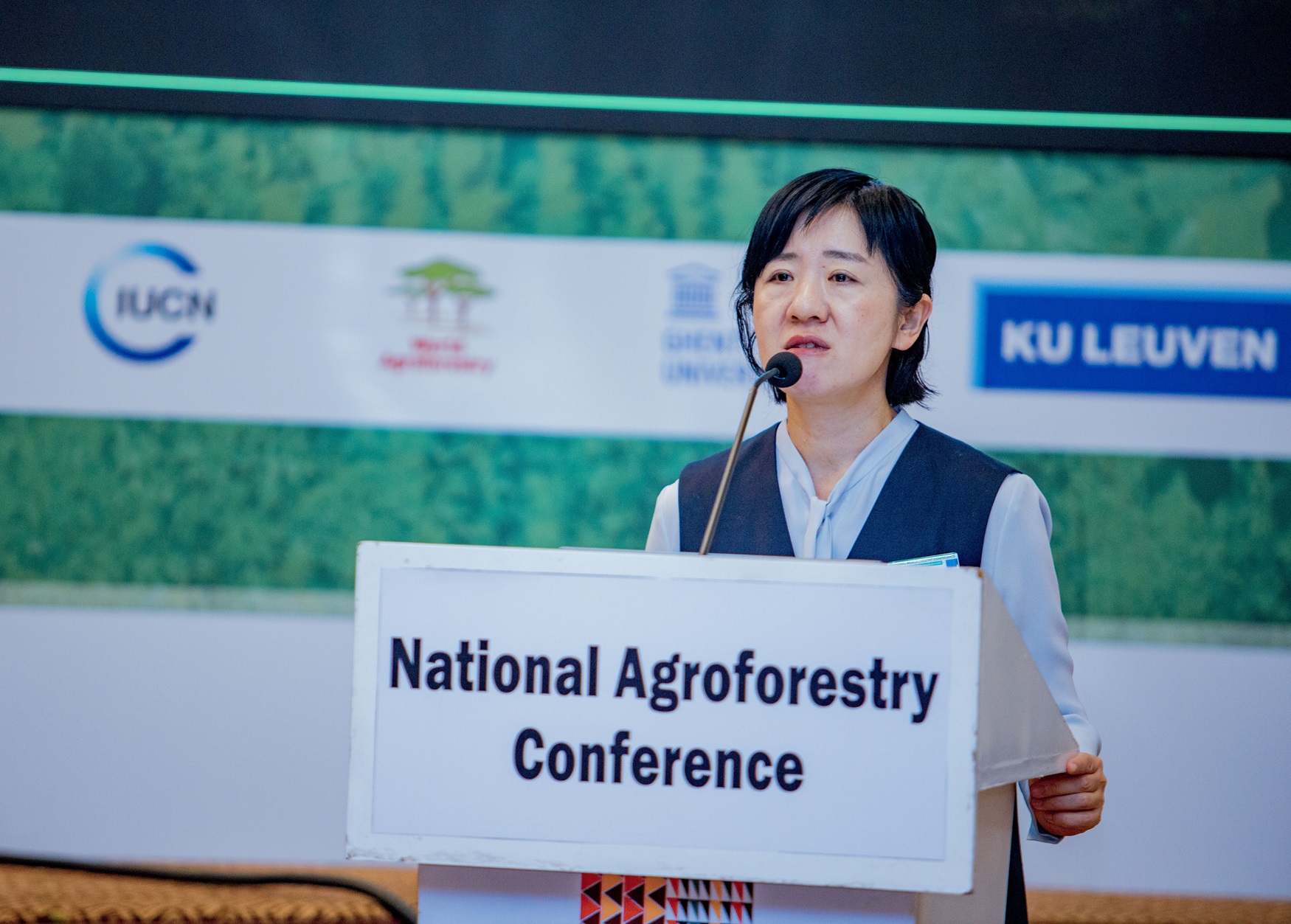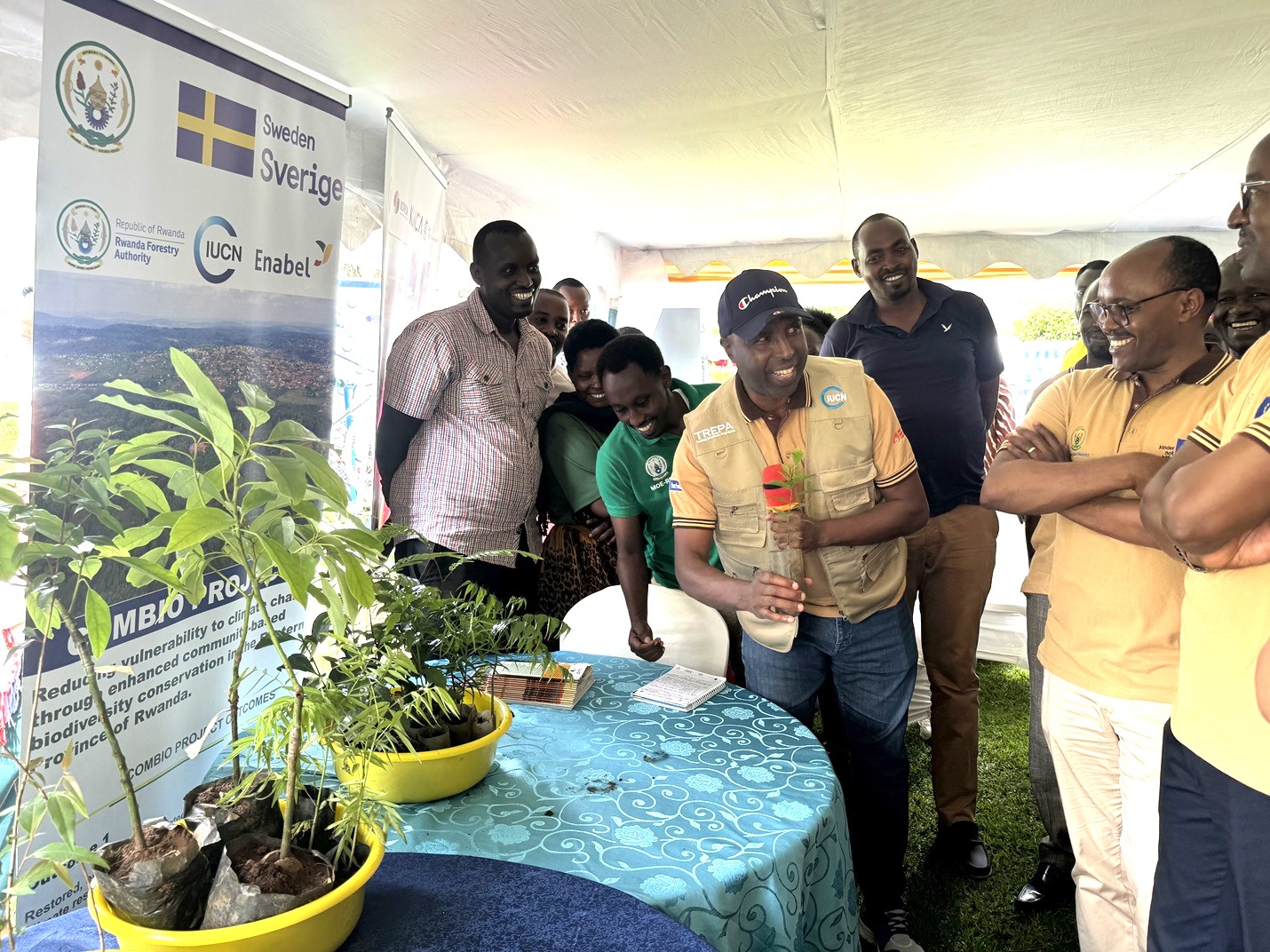Restoring Soil and Land Health in Rwanda Using a Community Centered Approach
In 2019, in response to the challenges of landscape degradation and food insecurity, the Government of Rwanda through Rwanda Forestry Authority (RFA) and in collaboration with the International Union for Conservation of Nature (IUCN) secured funding from the International Climate Initiative of the German Federal Ministry for the Environment, Nature Conservation and Nuclear Safety (BMU) that is supporting Large-scale Forest Landscape Restoration (FLR) in Africa.
The BMU support targets to restore over 100,000 Ha of degraded forest landscapes in Rwanda, Kenya, Malawi, and Cameroon by 2025.
In a consortium composed of Government agencies in the four countries, IUCN, World Resources Institute (WRI), Food and Agricultural Organization (FAO), Worldwide Fund for Nature (WWF), World Bank (WB), African Union Development Agency-NEPAD (AUDA-NEPAD), and Deutsche Gesellschaft für Internationale Zusammenarbeit GmbH (GIZ), the project benefits from diverse technical capacities, innovation, and multinational influence effectuated by knowledge and experience exchange, collaboration, and synergies.
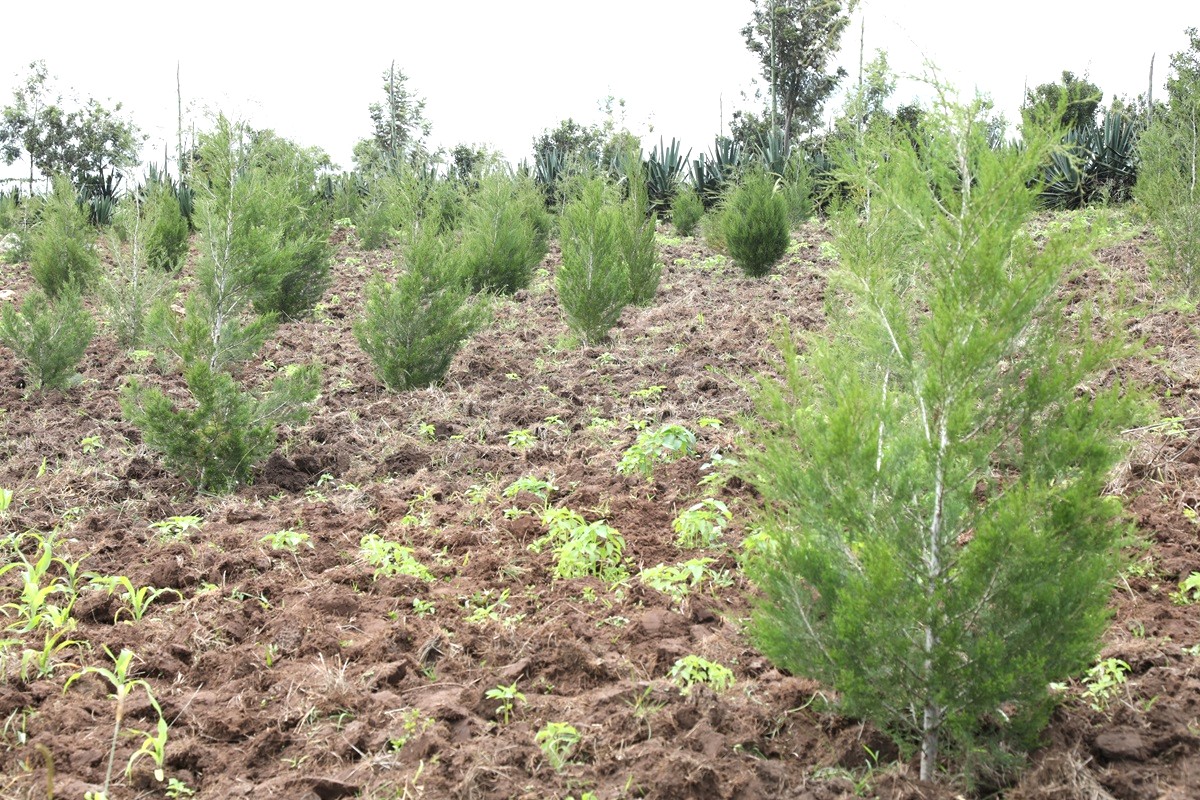 Photo: AREECA project is currently turning bare lands into a green in both Nyagatare and Kirehe districts of Rwanda
Photo: AREECA project is currently turning bare lands into a green in both Nyagatare and Kirehe districts of Rwanda
Simply referred to as; the Alliance for Restoration of Forest Landscape Ecosystems (AREECA) due to its multi-agency approach the project aims to accelerate and catalyze restoration in Africa by engaging governments and local communities in restoring degraded lands and conserving biodiversity through interventions ranging from on-ground actions to improved policy and institutional coordination.
Project implementation started in 2021 and will see increased the socio-economic growth , improved ecological functions, and several other climate-related co-benefits
In Rwanda, the AREECA project is being implemented, by the RFA , RWARRI and IUCN with support from GIZ, in the Rwimiyaga and Karama sectors of the Nyagatare district and in Nyamugari, Mpanga, Nasho, Nyarubuye and Kigarama sectors of the Kirehe district in the Eastern Province.
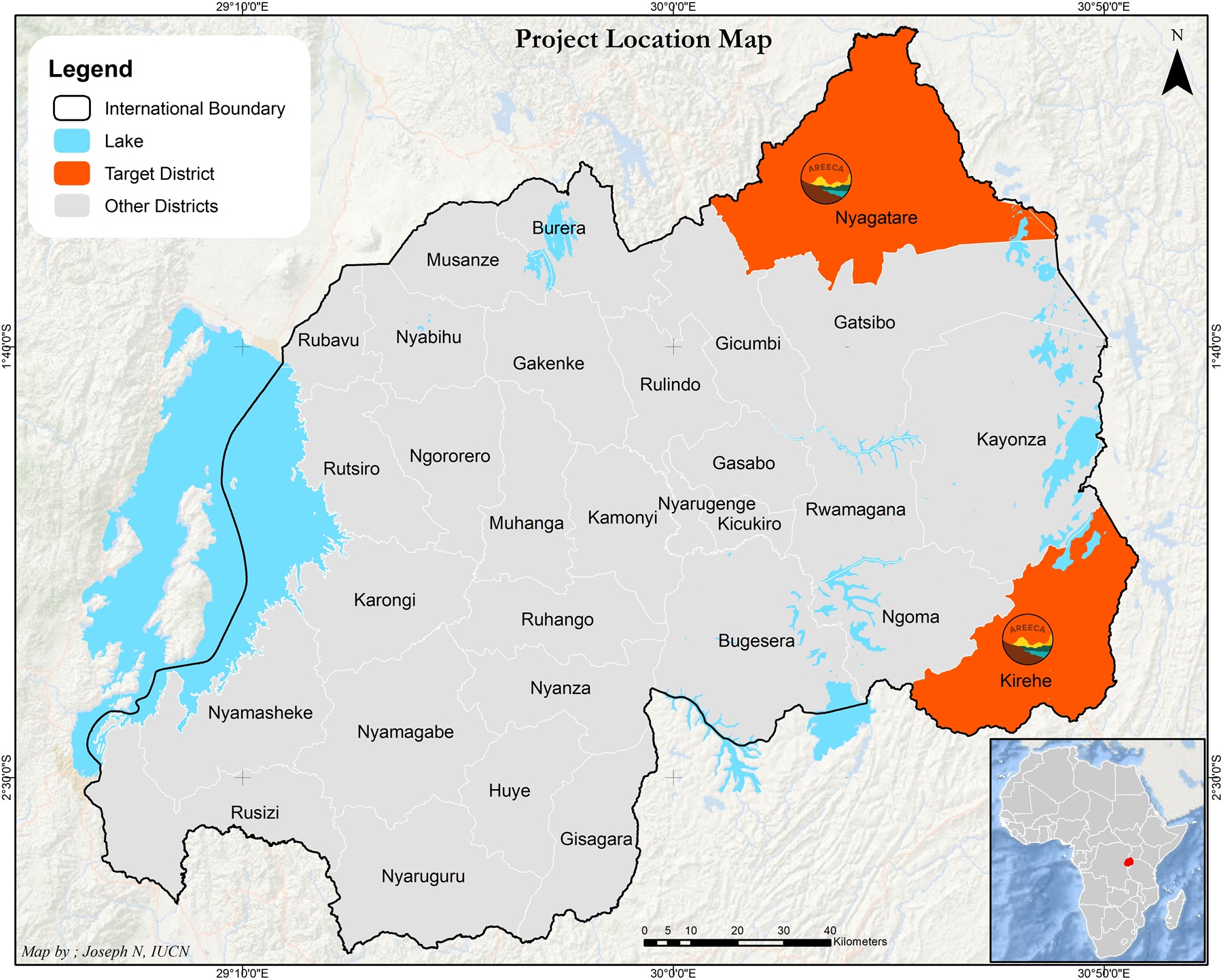 Photo: AREECA Project Location in Rwanda
Photo: AREECA Project Location in Rwanda
While the Eastern Province contains the largest area of national farming lands, it is highly vulnerable to a range of factors including climate related risks e.g. droughts and human and climate induced factors such and landscape degradation.
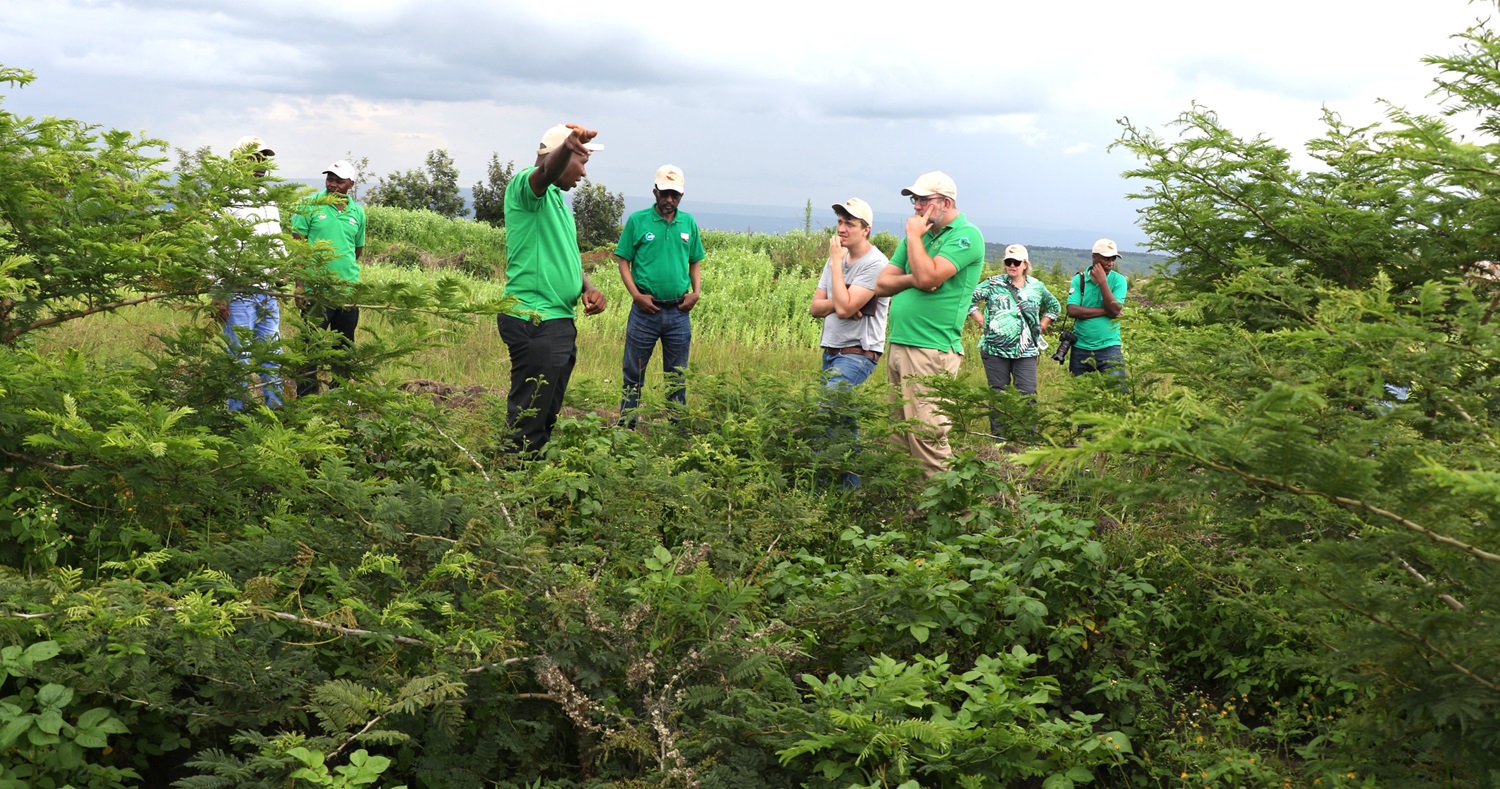 Photo: AREECA project in Rwanda is being implemented with technical support from IUCN, RFA and RWARRI
Photo: AREECA project in Rwanda is being implemented with technical support from IUCN, RFA and RWARRI
As the majority of smallholder farmers in the province depend exclusively on rainfall, changes to weather seasonality including shorter and more intense rainy seasons have led to crop failure, and food shortages. Deforestation and land degradation, aggravated by climate change and unsustainable land use practices, pose an added threat to ecosystem functions, land productivity, food and water security in the two districts.
Through the AREECA project the government of Rwanda is implementing a community-centric restoration model; an innovative and locally tailored approach aimed at increasing restoration ownership in the communities and among landowners. The model allows the local communities to identify landscape and livelihood challenges and identify, prioritize, and implement intervention measures focusing on landscape restoration .
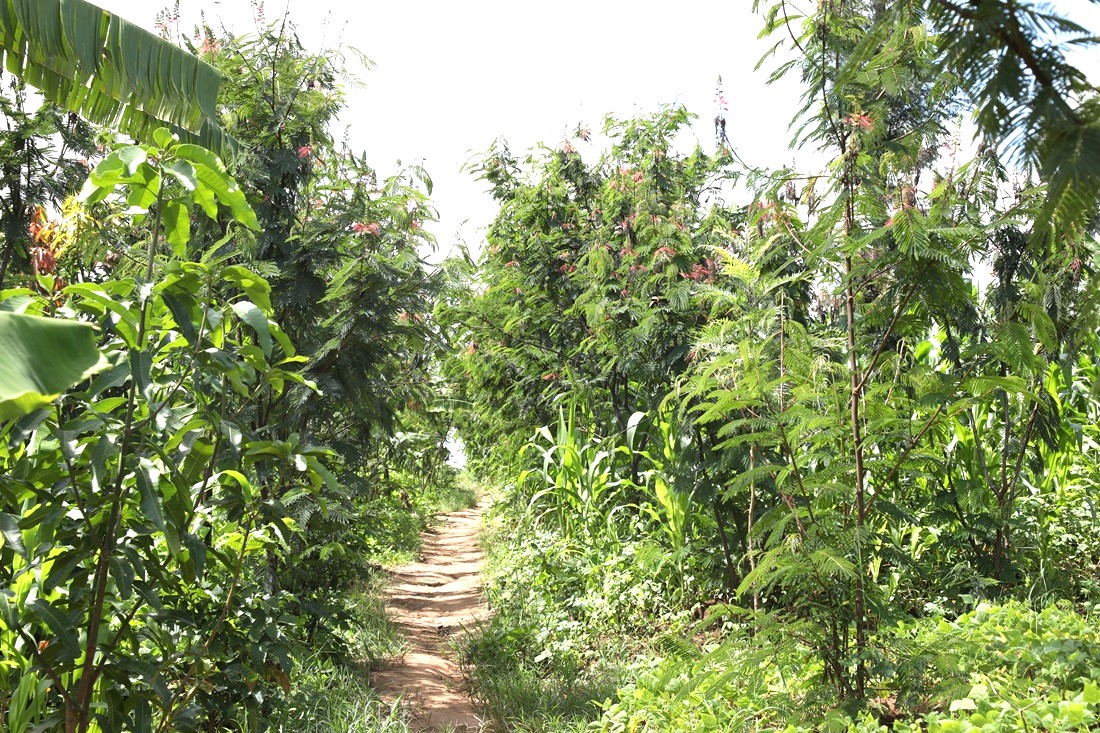 Photo: Forest landscape restoration can help reverse these losses
Photo: Forest landscape restoration can help reverse these losses
Using this model, land users and farmers in the two districts have been at the forefront in establishing tree nurseries, tree planting, and monitoring with technical support from IUCN and Rwanda Forestry Authority. It is expected that the project will be scaled up and out beyond the two districts, thereby sustainably accelerating restoration efforts in the country.
 Photo: AREECA impacts in Rwanda 2021-2023
Photo: AREECA impacts in Rwanda 2021-2023
To date, the AREECA project has achieved in counting 3000 Ha of land under afforestation, , 2000 Ha of land under agroforestry , and 60 km road buffer under protective forest in both districts. Part of efforts to improve nutrition and increase economic opportunities among the farmers, the programme has distributed and facilitated the planting of over 3000 fruit tree seedlings.
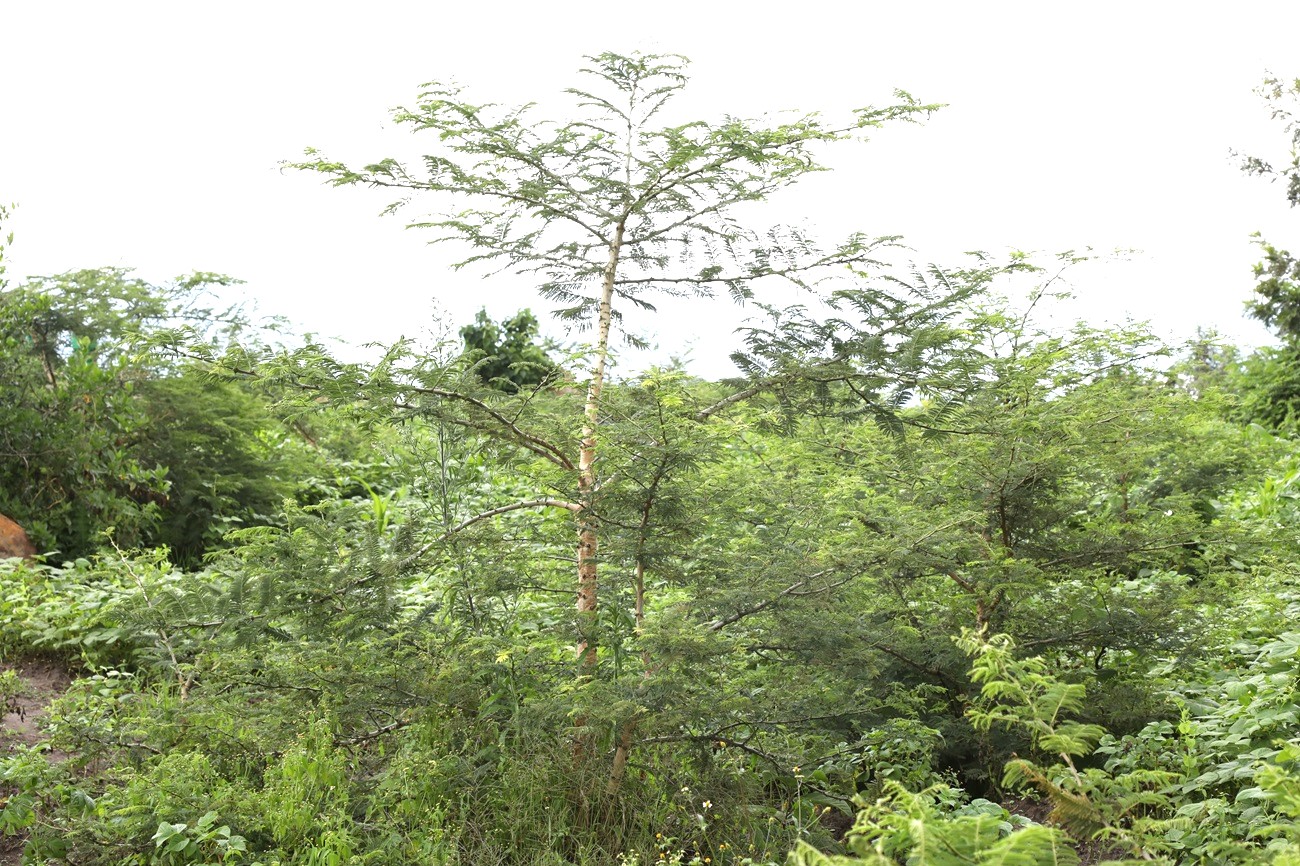 Photo: Trees that are native to a locale are very well adapted to the naturally occurring site conditions
Photo: Trees that are native to a locale are very well adapted to the naturally occurring site conditions
In the past year alone, the local communities have produced and planted a total of 1,899,612 seedlings in Kirehe district and 1,123,188 seedlings in the Nyagatare district generating unprecedented social-economic benefits including increased income among the farmers.
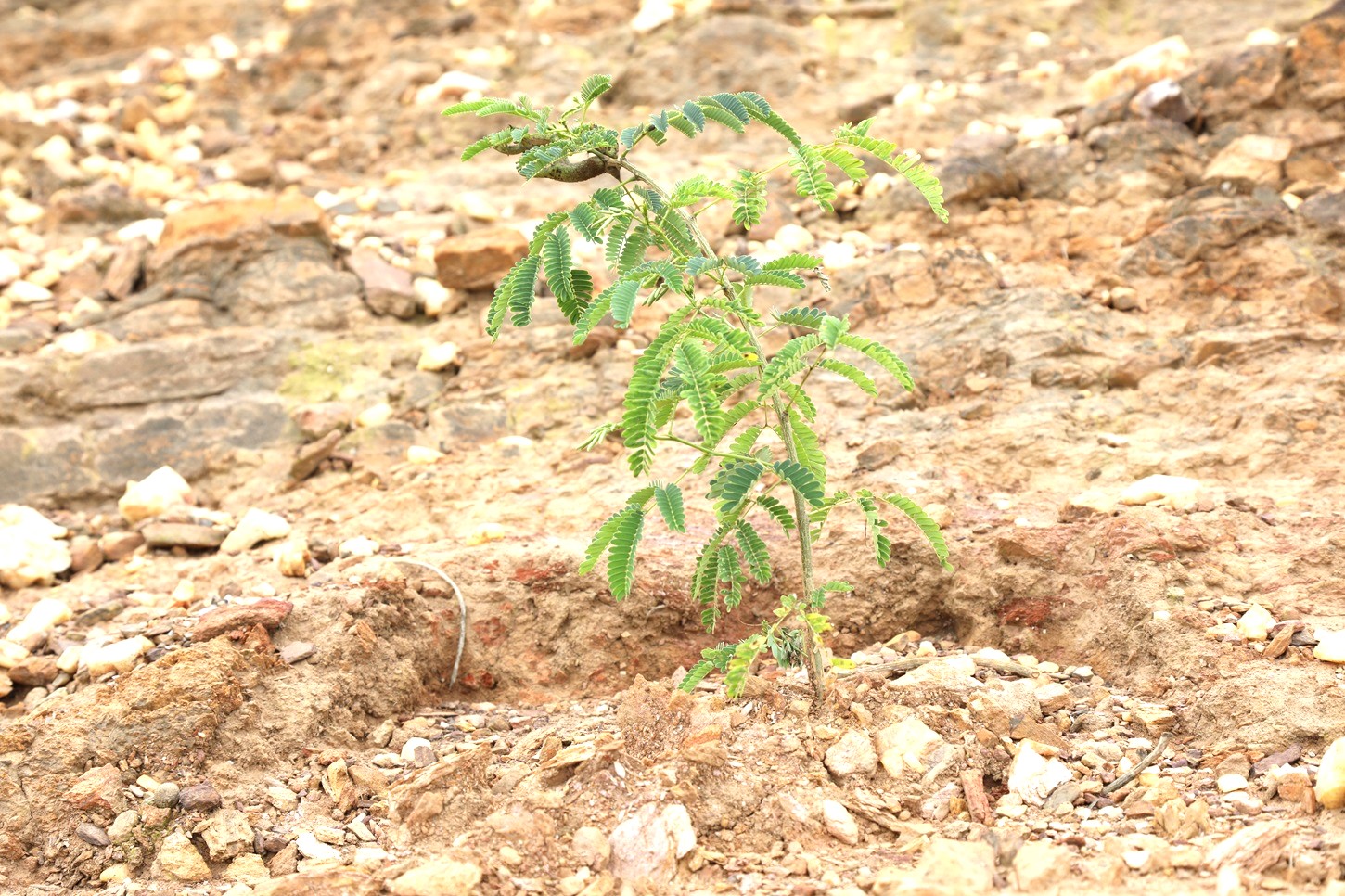 Photo: Trees that are native to a locale are very well adapted to the naturally occurring site conditions
Photo: Trees that are native to a locale are very well adapted to the naturally occurring site conditions
Local community members are organized into 10 local community groups and are committed to the maintenance and sustainability of project activities even after the project phases out.
Again, in a bid to reduce dependency on wood fuel and minimize deforestation, the project has distributed 1000 cooking stoves to an equivalent number of households in the 2 districts.
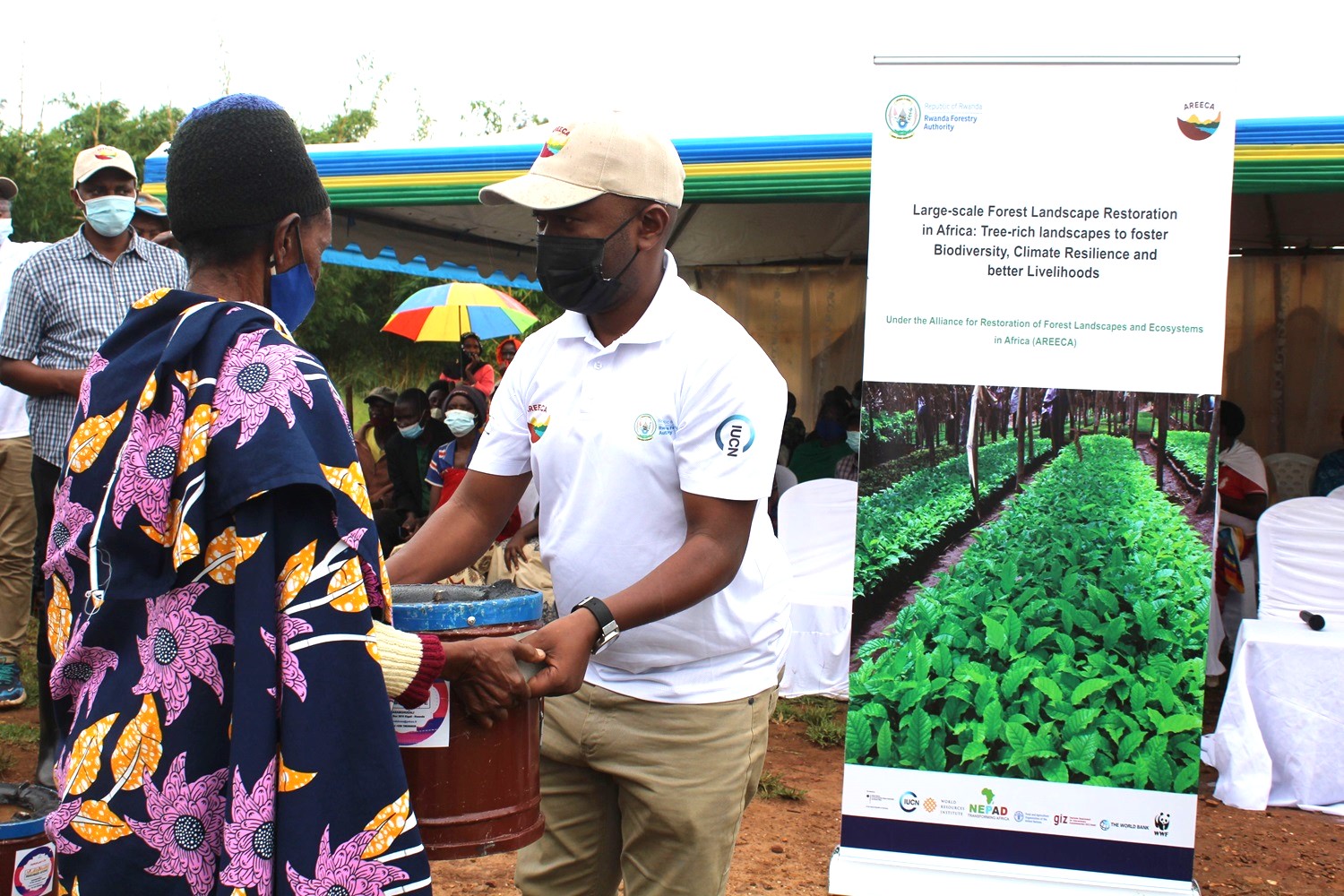 Photo: Improved cook stoves donated by AREECA improve health and time savings for households while preserving forests but also reducing emissions
Photo: Improved cook stoves donated by AREECA improve health and time savings for households while preserving forests but also reducing emissions
Through the AREECA project, RFA forestry and agriculture extension officers, the district authorities, and IUCN engage smallholder farmers to provide practical knowledge on how to restore, protect, and conserve their land.
Speaking at a recent joint field mission, the Mayor of Kirehe, Bruno Rangira thanked IUCN, RFA and GIZ for making Kirehe as the target district for the project and urged the beneficiaries to take care of planted trees.
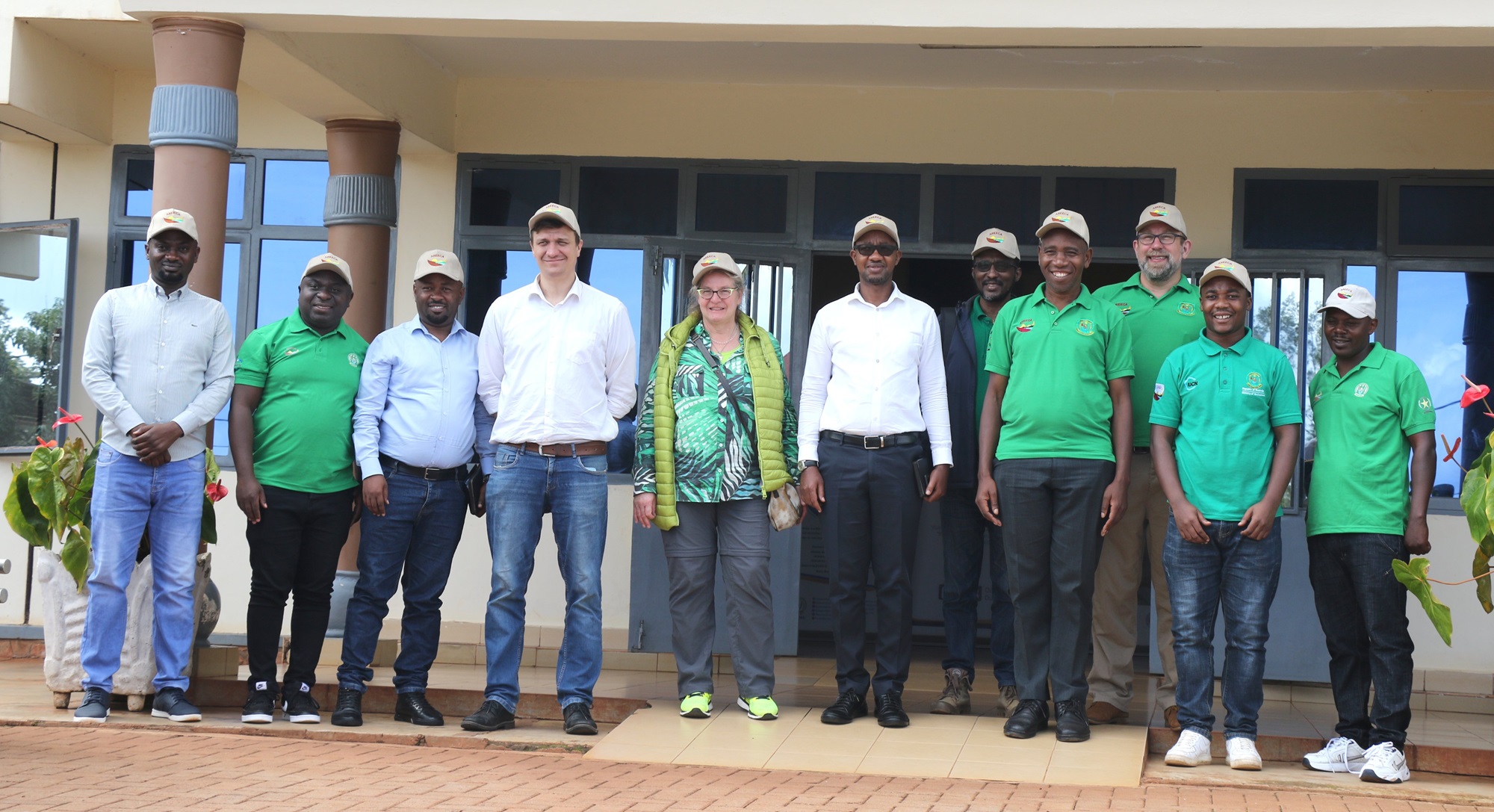 Photo: Mayor of Kirehe, Bruno Rangira thanked IUCN, RFA and GIZ for their support in restoring degraded lands in Kirehe
Photo: Mayor of Kirehe, Bruno Rangira thanked IUCN, RFA and GIZ for their support in restoring degraded lands in Kirehe
“We are very happy to have this project in our district. It contributes to the efforts of combating desertification and climate change, improving agricultural productivity and consequently livelihoods”, said Mayor Bruno.
“Through tree-based restoration and improved land use management, the project is reducing Greenhouse Gas emissions. Improved ecosystems are expected to build resilience for adaptation to climate change. The project has created more than 5200 green jobs for households in Kirehe and Nyagatare”, Bruno added.
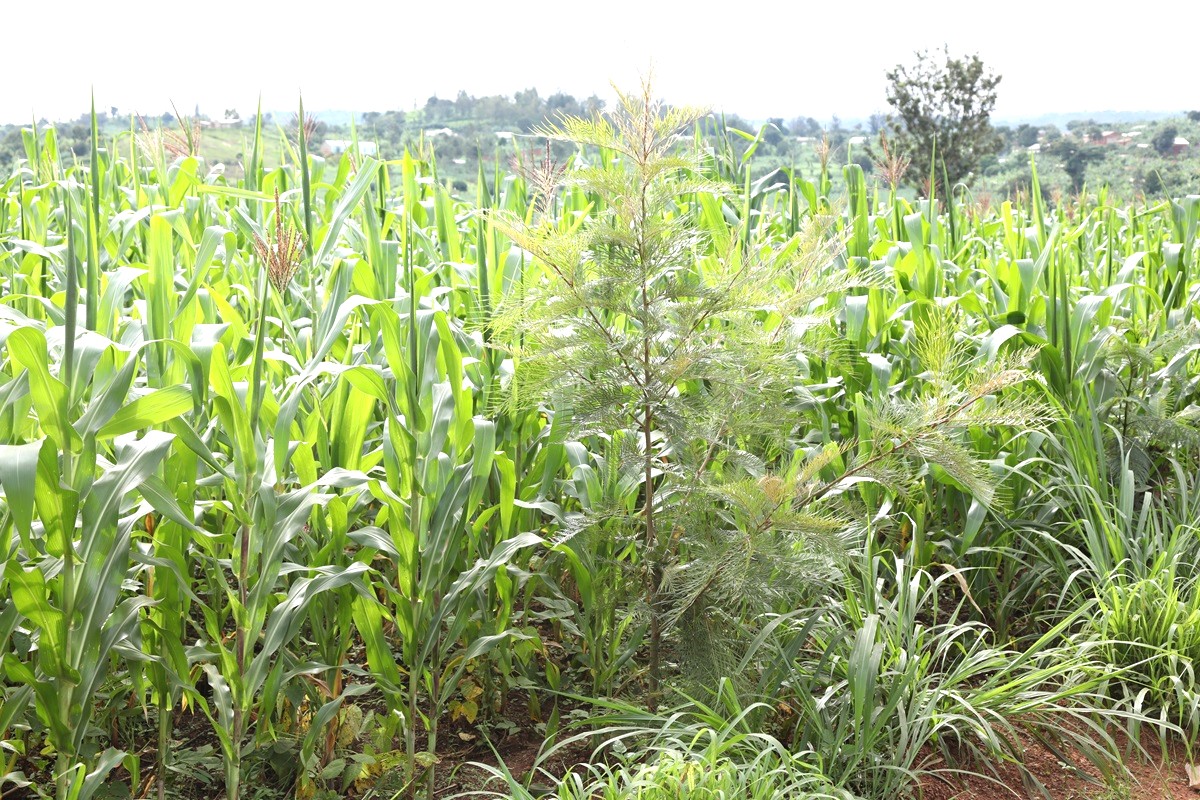 Photo: Agroforestry is the practice of combining tree and crop cultivation on a land and may increase land productivity and water use efficiency
Photo: Agroforestry is the practice of combining tree and crop cultivation on a land and may increase land productivity and water use efficiency
In the recent project evaluation using AREECA monitoring masters’ tool; which again uses Ex-Ante Carbon-balance Tool to calculate carbon removal, AREECA’s on-ground interventions between 2021 and 2022 have shown a potential of sequestering about 119,000 tonnes of carbon; a number that is expected to double in the account of interventions made in 2023.
Madam Mukagatare Vivine, a resident of Kigarama sector, and President of a Community Group of 82 people in Kirehe district is a model farmer participating in the project through planting agroforestry trees ( Calliandra and grevillea.)The 60-year-old farmer testified that after implementing improved soil stabilization techniques and being trained on modern agricultural techniques such as improved crop varieties and use of organic fertilizer her yield have significantly increased.
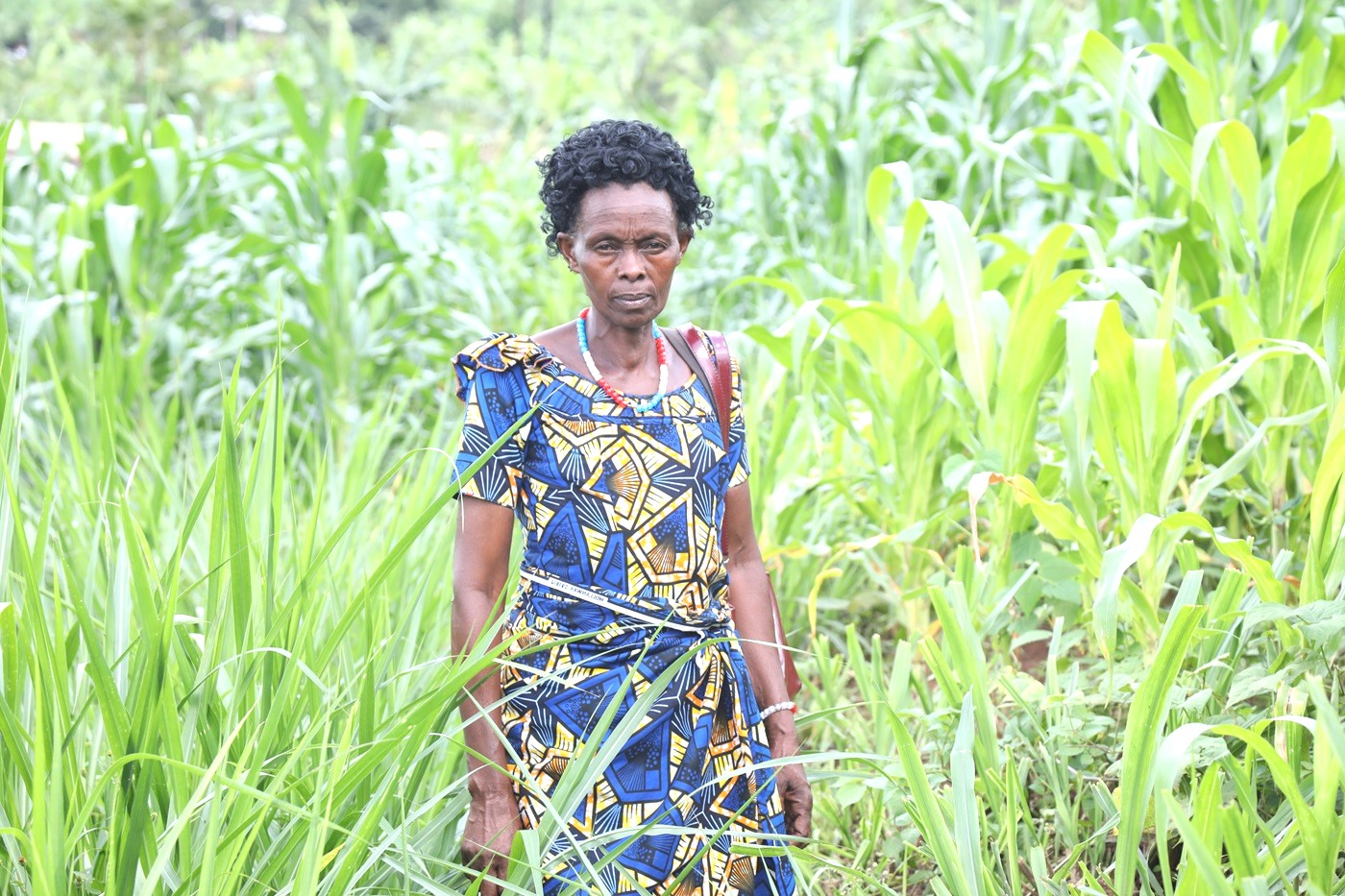 Photo: Mukagatare Vivine, one of AREECA beneficiaries in Rwanda in her farm, Kirehe District of Rwanda
Photo: Mukagatare Vivine, one of AREECA beneficiaries in Rwanda in her farm, Kirehe District of Rwanda
“Many people in this area were not interested in planting trees, and when they did they planted eucalyptus, which and degrades the soil further”, she added
With my experience, I can testify that agroforestry trees have led to improved soil fertility and overall crop production on my land,” Mukagatare testified
Mukagatare is currently using an improved cooking stove received from AREECA which has reduced the use of firewood by 70%.
So far Mukagatare has secured RWF 600,000 as payment for daily jobs through cooperatives in the preparation of nurseries, planting trees, and monitoring trees.
Mutamba Jesca, another AREECA beneficiary, first started planting trees two years ago, inspired by the profit she heard was possible from selling mature trees.
Jesca learned about grevillea trees from mobilization done under AREECA. Similar to eucalyptus, grevillea trees grow quickly and straight, which makes them highly marketable for timber.
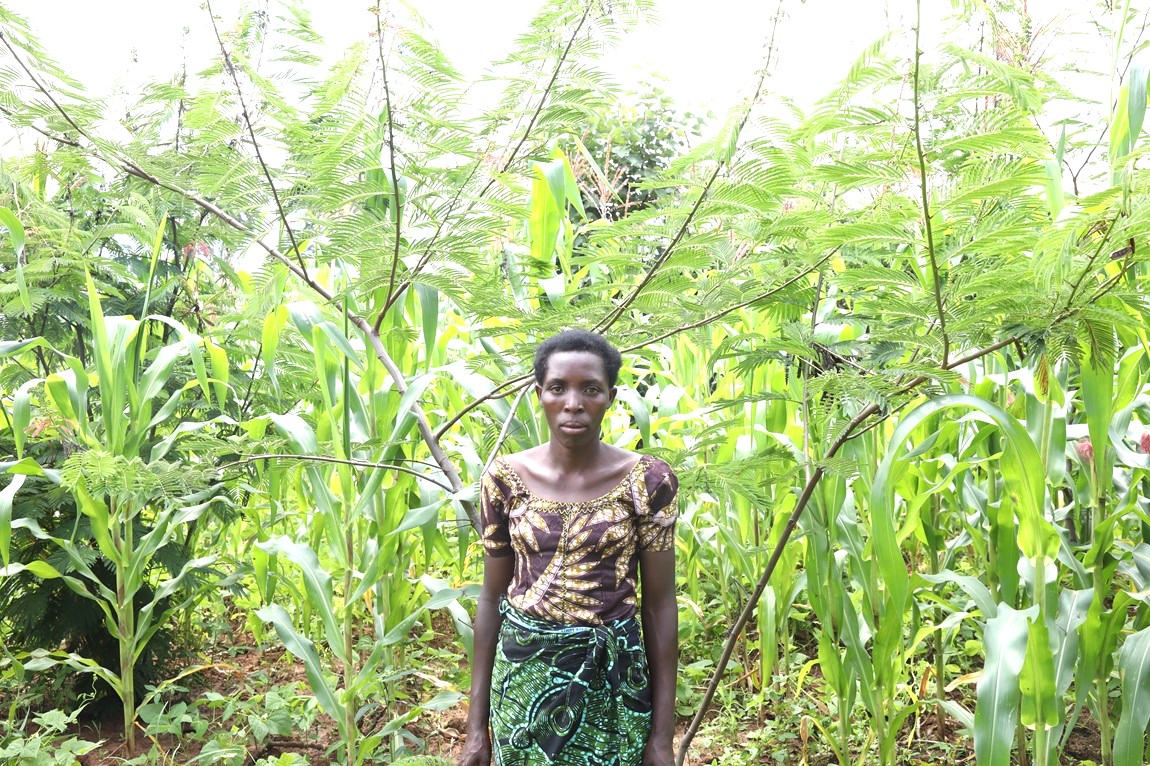 Photo: Mutamba Jesca, AREECA beneficiary from Kirehe District in her farm with trees and crops
Photo: Mutamba Jesca, AREECA beneficiary from Kirehe District in her farm with trees and crops
Jesca realized that by planting grevillea trees, she could get the financial benefits she hoped for but also increase her crop yield.
"Our area is very prone to climate disasters and that is why we are now thankful to the AREECA project that provides job opportunities.
We appreciate this restoration project that is creating jobs and training us about tree nursery management, and how trees can help in climate resilience” , noted Philip Nsabuwera, a community member who participated in tree nursery narrated.
“It was a problem for my family to pay health insurance, but from working in the nursery, I managed to pay the insurance to all my members, and I’ve started saving to buy a cow”, Philip added.
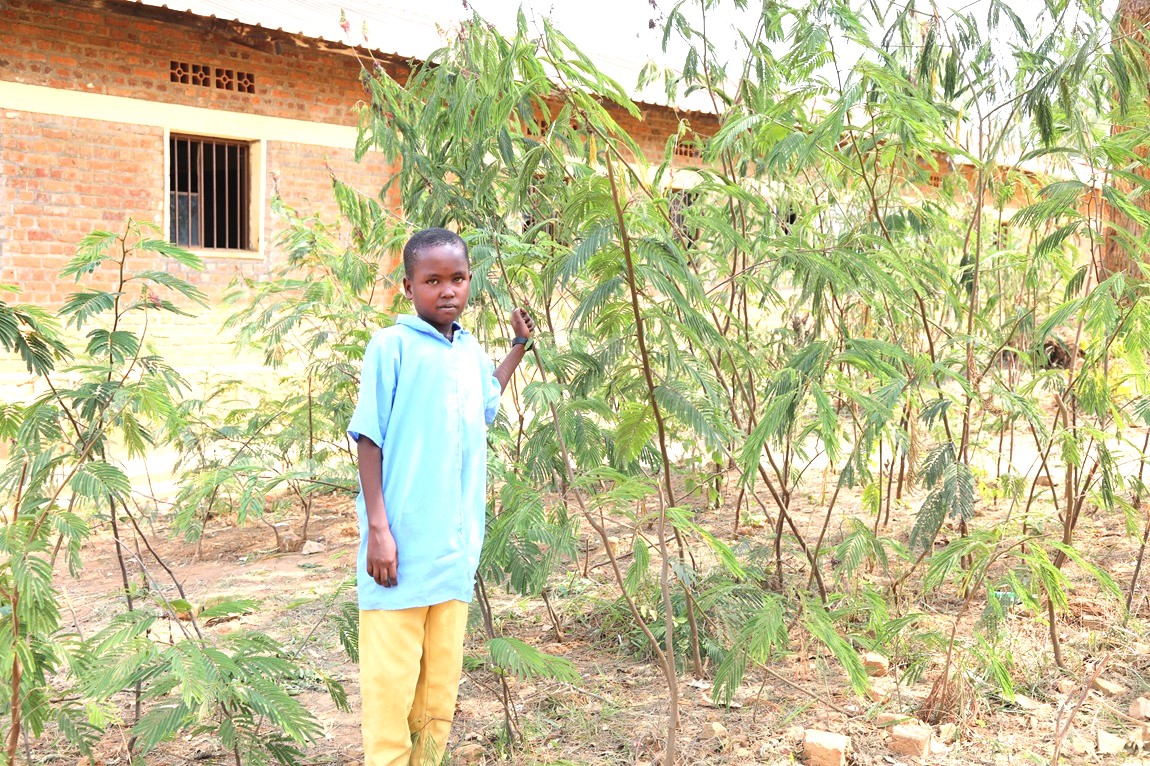 Photo: Through the AREECA project campaign, many young people in Rwanda have been educated on Forest Landscape Restoration
Photo: Through the AREECA project campaign, many young people in Rwanda have been educated on Forest Landscape Restoration
When planted with agroforestry trees alongside crops, most varieties of trees contribute significantly to soil health by controlling erosion, improving the soil’s ability to absorb water, and maintaining a high level of organic matter, as well as fixing nitrogen. Trees can also play an important role in improving biodiversity.” Said, Mbonigaba Jean, Forestry Officer at Nyagatare District
In a catalytic effect on the 5, 000 Ha under restoration, AREECA aims to bring an additional 20,000 Ha under restoration in Eastern province. This will be exceeded with the adoption of the similar community approach in the implementation of the complementary Green Climate Fund (GCF) funded Transforming Eastern Province through Adaptation (TREPA) project.
Read more about AREECA below:
Find high resolution photos of restored sites by AREECA in Rwanda. All rights reserved to IUCN
Malawi hosts Chiefs Forum on Natural Resources Management
IUCN Rwanda joined Government of Rwanda to celebrate International Day of Forests, Water and Meteo
AREECA as a catalyst in combating desertification and promoting Healthy livelihood in Rwanda’s East
Local community gave testimonies on how AREECA project is transforming their lives
AREECA was featured in IUCN World Conservation Congress in Marseille
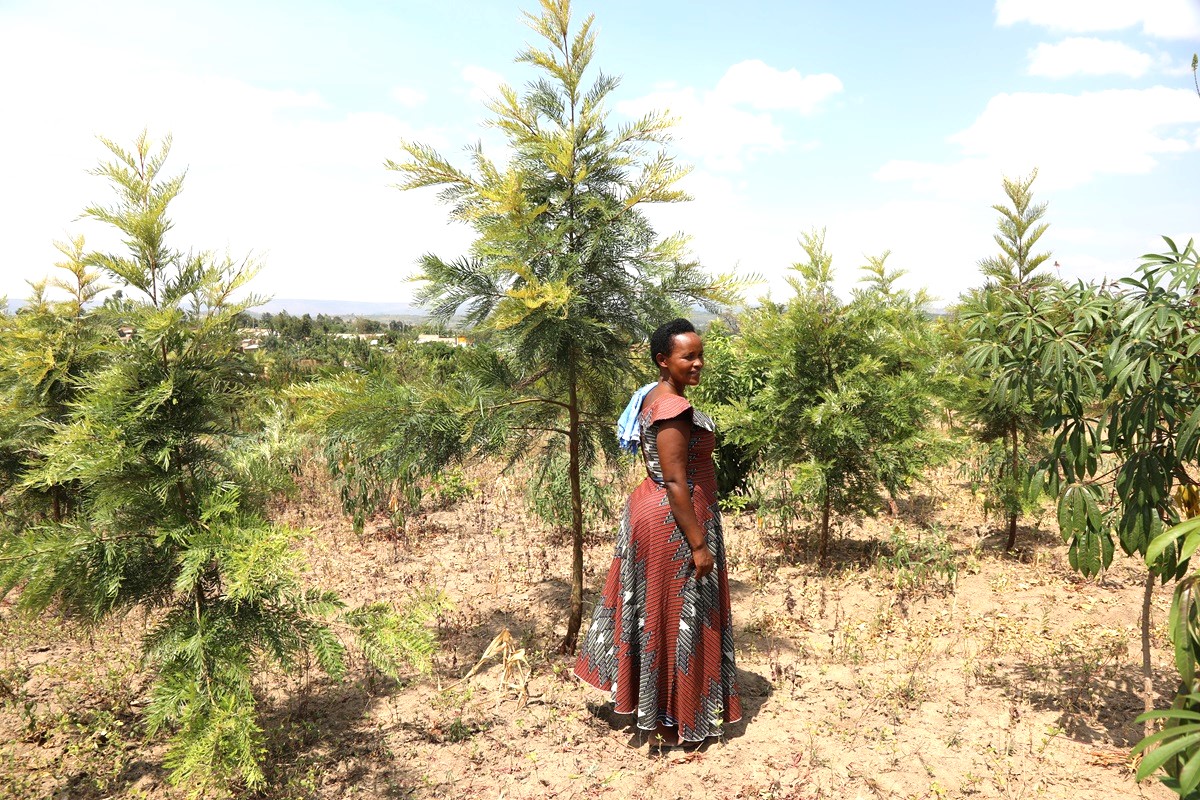 Photo: Not only does Forest Landscape Restoration benefit people and biodiversity, it can help us achieve the SDGs
Photo: Not only does Forest Landscape Restoration benefit people and biodiversity, it can help us achieve the SDGs
Disclaimer
Opinions expressed in posts featured on any Crossroads or other blogs and in related comments are those of the authors and do not necessarily reflect the opinions of IUCN or a consensus of its Member organisations.
IUCN moderates comments and reserves the right to remove posts that are deemed inappropriate, commercial in nature or unrelated to blog posts.

